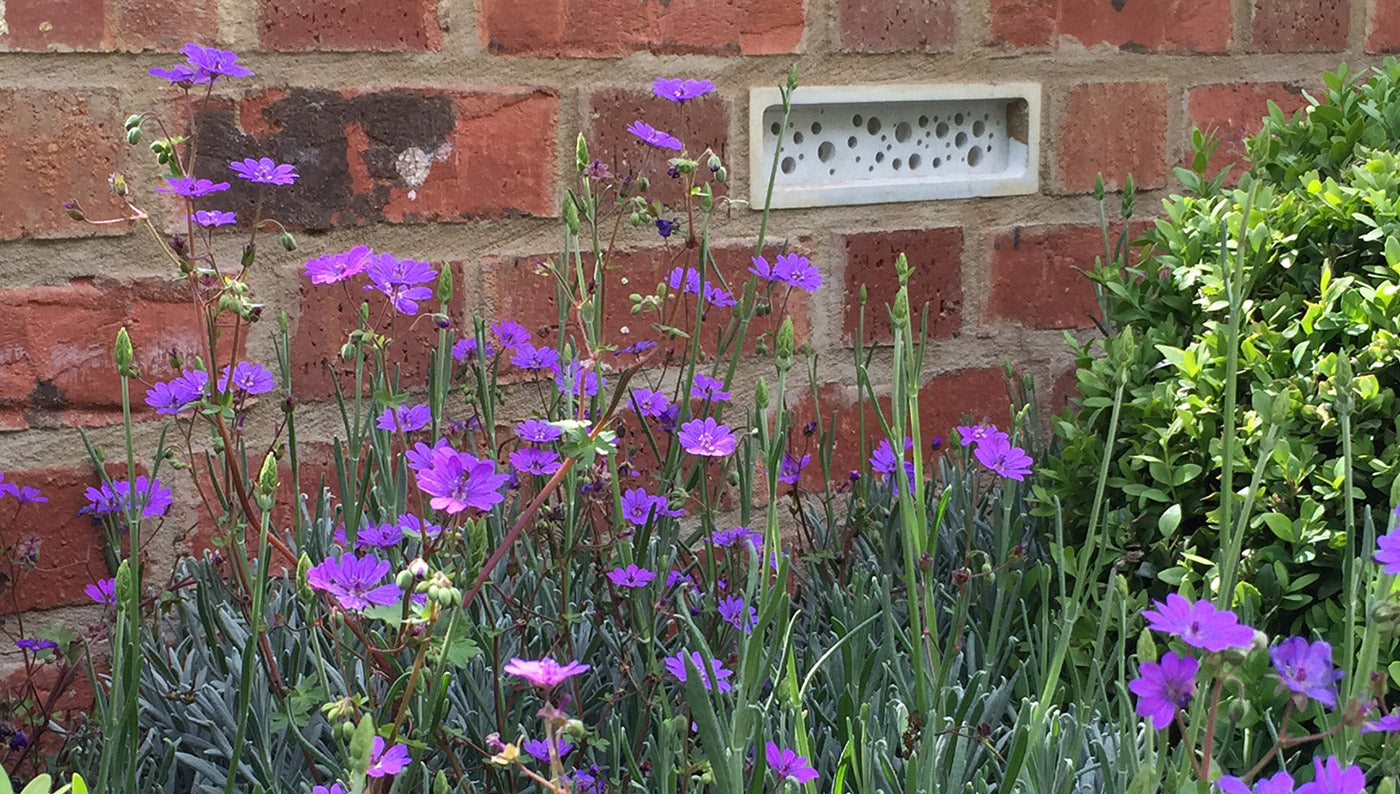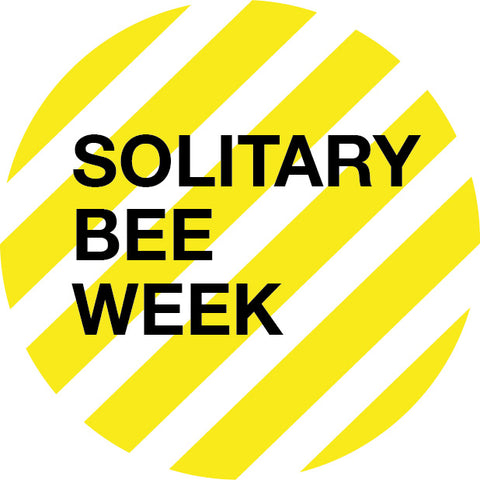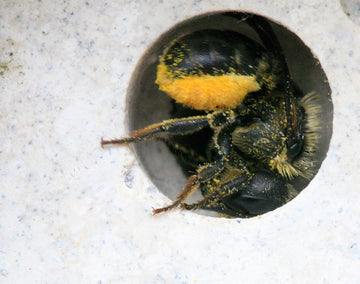5 things you need to know about solitary bees.
1. Solitary bees are different from honey bees and bumble bees.
Solitary bees are not simply bees who have left the hive and are now alone. There are over 200 species of solitary bee and, as the name suggests, they live alone, although in truth they often nest close to one another. They do not produce honey, do not have a queen and do not live in hives.
 2. Pollinators are responsible for around a third of all food we eat.
2. Pollinators are responsible for around a third of all food we eat.
Pollinators, including solitary bees, carry out a vital role in pollinating our crops, and also flowers and trees. In some parts of China pollination is already being undertaken by hand using paintbrushes because there are no bees left to do it naturally. We used to think that honey bees were the biggest contributors to crop pollination but that simply isn't the case today, all types of bees are important. 
3. Solitary bees are non-aggressive.
Because solitary bees do not have a store of honey to protect they are non-aggressive, meaning they are safe around pets and children. The males generally have no sting and the females will only sting if handled roughly or trod on. Perfect therefore to encourage into your garden or allotment or new build development.

4. They have a short, but busy, life cycle.
Generally (across the species) solitary bees emerge from their nests in the spring. Males emerge first and, after feeding, they hang around the nest waiting for the females. Once mating is complete the males die fairly quickly, what a life! After mating the females will begin the process of nesting, selecting a suitable site, constructing the nest and laying anything between 1 and 20 eggs. The eggs will hatch into larvae, which feed on pollen and nectar that the female has stored within each nest. The larvae develop and pupate, emerging the following spring (or later in the year depending on species) and repeating the cycle.
5. Their habitat is under increasing threat.
There are many factors in declining solitary bee numbers, including increased use of chemicals in farming, fewer wildflower meadows, and less suitable habitat. As fields become bigger we lose more hedgerows, which used to provide ample homes to a wide range of wildlife. Also as we build more and more properties and landscape our gardens we unwittingly destroy habitat and nests as we do so. We developed the bee brick as a means of increasing consideration for the habitat of cavity-nesting solitary bees, by creating a possible nesting site for them in each new development, garden or wall.

Solitary Bee Week
If you'd like to know more about Solitary Bees or fancy helping us spread the word about these brilliant pollinators then check out Solitary Bee Week, a week of action and awareness we organised to raise awareness of these 'other' bees.



41 comments
Hi mine to have holes that are blocked up ,what happens to them I cleaned one of them the other year and the cocoons was still in there ,, do you know why they are not coming out ?? Thanks Caroline
We use blocks of wood from old pallets in which we drill around 25 holes in each with 7.0-7.5mm drill bit, and made a ‘bee apartment building’ currently we have 30 blocks! Also we drilled holes in fence posts and old trunks. It’s a real treat seeing the bees emerge each spring, and refilling the holes.
Hi, I love watching the leafcutter bees zipping circles from leaves to make their little cane doors with and could watch them for hours!…however, I still have canes with doors…some look a little disturbed, some don’t and some have even been closed off for a couple of years!. The canes are glued in place and so replacing them seems impossible, if I find a way of adding fresh canes will they come to them while there are other canes closed off nearby?…some American site suggest ‘harvesting’ the bees from the tubes but surely that’s an interference they don’t need?…sorry for the questions, but I want to do the right thing by them at all costs .
I have afew solitary bees houses. They were filled pretty much 2021 and 22. However I read to clear the holes of dirt after a time. Is this right, as there are several tubes still sealed. Do I clean or leave the sealed ones and clean the obvious used ones. Don’t want to harm any. Anyone point me to a book or something to learn more (yes I said book, not Internet sites) Ta.
From what I have learned the bee hotels should be placed so that the morning sun hits it.